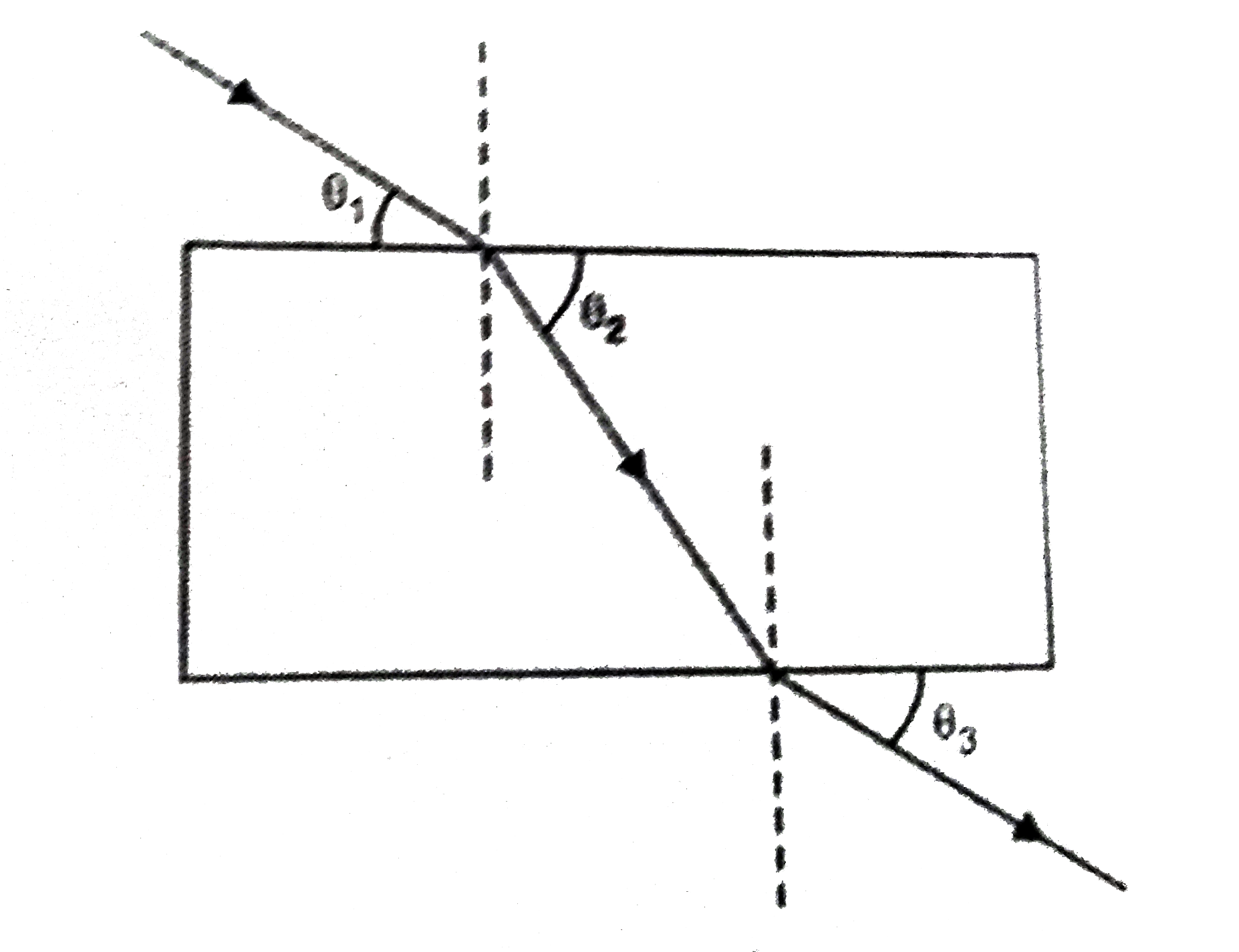A student traces the path of a ray of light passing through a rectangular glass. Slab.

For measuring the angle of incidence, he must position the protractor in the manner shown in figure :
A
B
C
D
The correct Answer is:B
NA
Topper's Solved these Questions
- BOOK - LAKHMIR SINGH & MANJIT KAURCHAPTER - THE HUMAN EYE AND THE COLOURFUL WORLD EXERCISE - Long Answer Type Question3videos
THE HUMAN EYE AND THE COLOURFUL WORLD
- BOOK - LAKHMIR SINGH & MANJIT KAURCHAPTER - THE HUMAN EYE AND THE COLOURFUL WORLD EXERCISE - NCERT Book14videos
THE HUMAN EYE AND THE COLOURFUL WORLD
- BOOK - LAKHMIR SINGH & MANJIT KAURCHAPTER - THE HUMAN EYE AND THE COLOURFUL WORLD EXERCISE - Long Answer Type Questions2videos
THE HUMAN EYE AND THE COLOURFUL WORLD
- BOOK - LAKHMIR SINGH & MANJIT KAURCHAPTER - TEST PAPER 4EXERCISE - SECTION A10videos
TEST PAPER 4
Similar Questions
When a ray of light passes through a rectangular glass block, the direction of emergent ray is ___to the incident ray.
View SolutionIn an experiment to trace the path of a ray of light passing through a rectangular glass slab, angle of incidence in air was given as 60∘ . Two students P and Q found angle of refraction as 42∘ and 65∘ respectively. Who is right and why?
View Solution
Knowledge Check
- Question 1 - Select One
In an experiment to trace the path of a ray of light passing through a rectangular glass slab, four students measured the angles of incidence (i), angles of refraction (r) and angles of emergence (e) as shown in the diagrams :

The correct measurement is given in the diagram :AABBCCDD - Question 2 - Select One
A student does the experiment on tracing the path of a ray of light passing through a rectangular glass slab for different angles of incidence. He can get a correct measure of the angle of incidence and the angle of emergence by following the labelling indicated in figure :
 AABBCCDD
AABBCCDD - Question 3 - Select One
A student performs the experiment on tracing the path of a ray of light passing through a rectangular glass slab for different angles of incidence. He measures the angle of incidence ∠i, angle of refraction ∠r and angle of emergence ∠e for all his observations. He would find that in all cases :
A∠i is more than ∠r but (nearly) equal to ∠eB∠i is less than ∠r but (nearly) equal to ∠eC∠i is more than ∠e but (nearly) equal to ∠rD∠i is less than ∠e but (nearly) equal to ∠r
In an experiment to trace the path of a ray of light passing through a rectangular glass slab, angle of incidence in air was given as 60∘ . Two students P and Q found angle of refraction as 42∘ and 65∘ respectively. Who is right and why?
View SolutionIn the experiment on tracing the path of a ray of light passing through a rectangular glass slab, the correct setting of the protractor (D), for measuring the angle of incidence (∠I), and the angle of emergence (∠e) correspond, respectively, to diagrams :
 View Solution
View SolutionA student traces the path of a ray of light passing through a rectangular glass slab for three different values of angle of incidence (∠i) namely 30∘,45∘ and 60∘. He extends the direction of incident ray by a dotted line and measures the perpendicular distance 'l' between the extended incident ray and the emergent ray. He will observe that :
 View Solution
View SolutionA student while doing the experiment on tracing the path of a ray of light passing through a rectangular glass slab measured the three angles marked as θ1,θ2 and θ3 in the figure.
His measurements could be correct if he were to find :
 View Solution
View SolutionWhen light is incident from air on a rectangular glass slab and then the angle of incidence willl be:
View Solution

